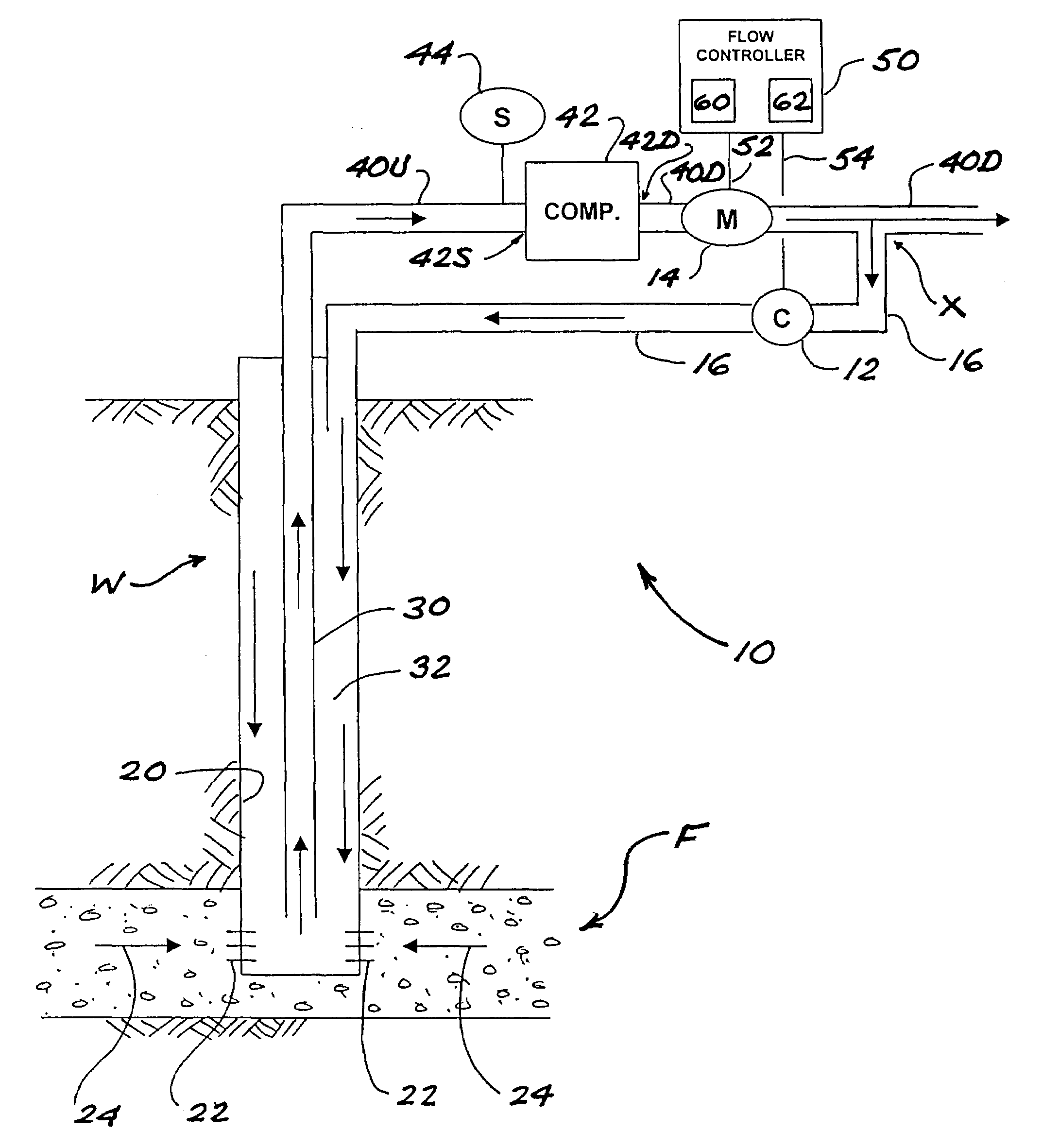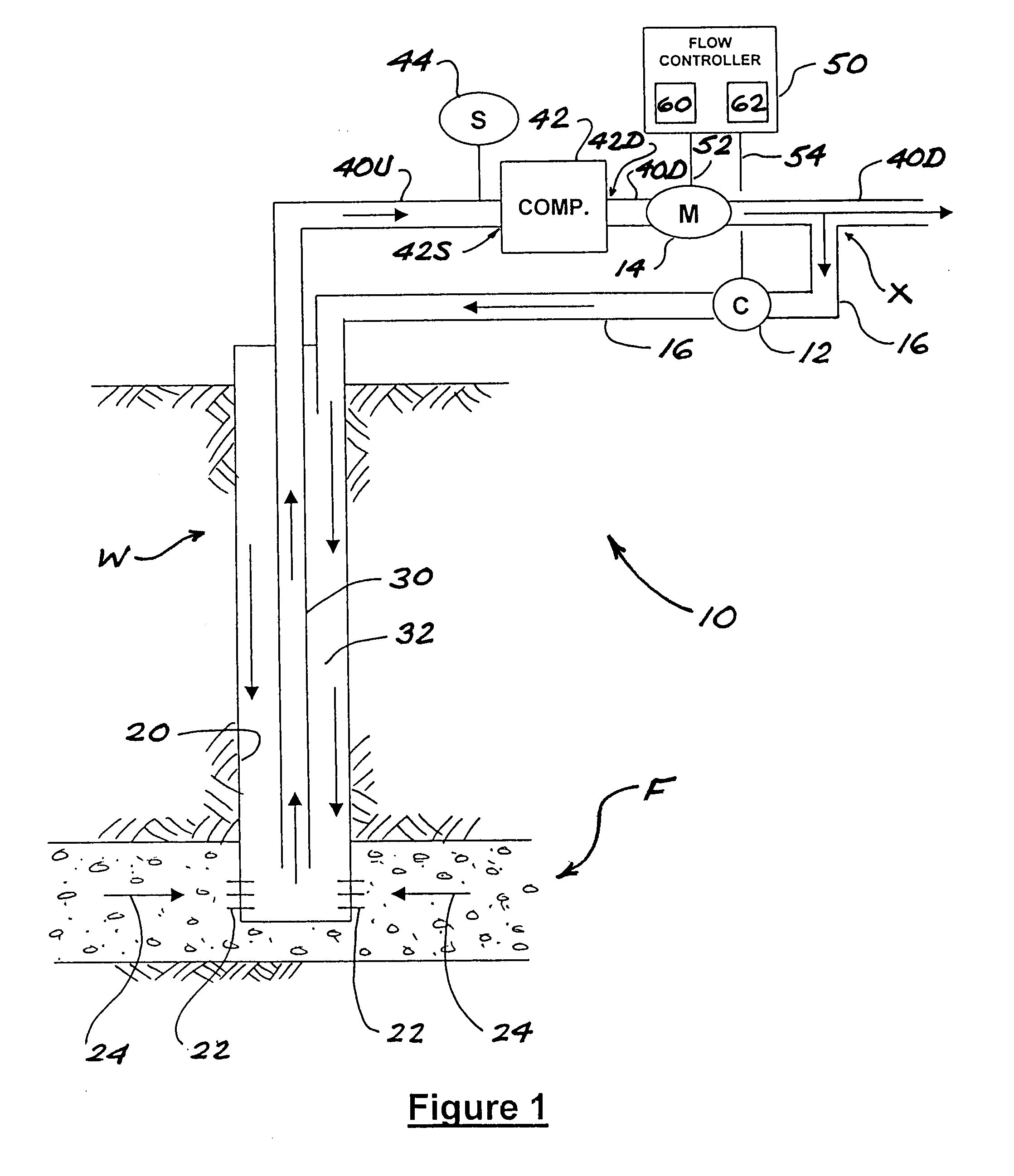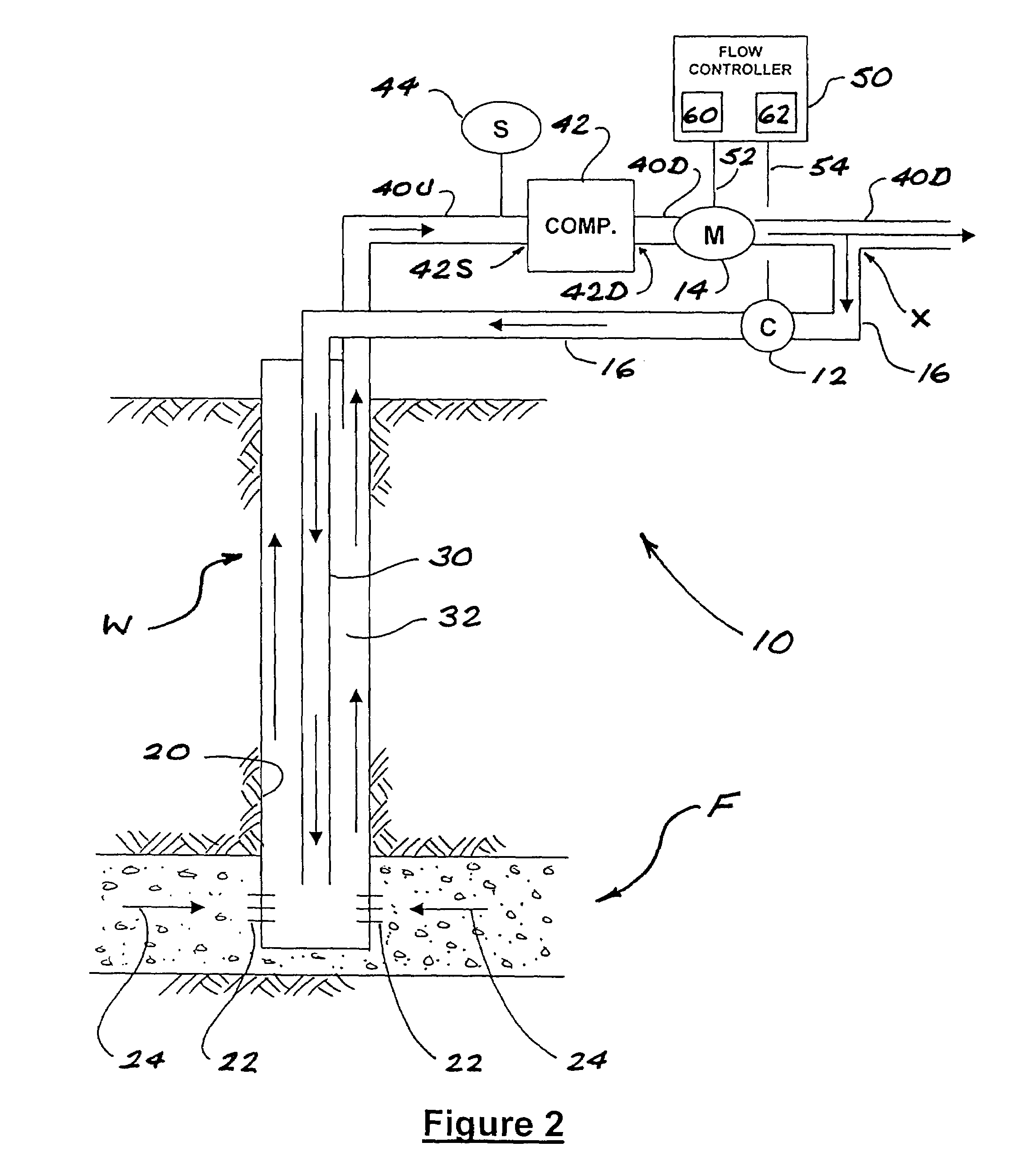Apparatus and method for enhancing productivity of natural gas wells
a technology of natural gas wells and productivity, applied in the direction of drilling casings, drilling pipes, survey, etc., can solve the problems of increasing the flow pressure of bottomholes, increasing the flow of gas wells producing from reservoirs with depleting formation pressure, and constant pressure drop, so as to prolong the production life of gas wells, reduce the pressure of bottomholes, and increase gas flows
- Summary
- Abstract
- Description
- Claims
- Application Information
AI Technical Summary
Benefits of technology
Problems solved by technology
Method used
Image
Examples
Embodiment Construction
[0046]The basic elements of the present invention may be understood from reference to the Figures, wherein the apparatus of the invention is generally designated by reference numeral 10. A well W penetrates a subsurface formation F containing natural gas (typically along with water and crude oil in some proportions). The well W is lined with a casing 20 which has a number of perforations conceptually illustrated by short lines 22 within a production zone (generally corresponding to the portion of the well penetrating the formation F). As conceptually indicated by arrows 24, formation fluids including gas, oil, and water may flow into the well through the perforations 22. A string of tubing 30 extends inside the casing 20, terminating at a point within the production zone. The bottom end of the tubing 30 is open such that fluids in the wellbore may freely enter the tubing 30. An annulus 32 is formed between the tubing 30 and the casing 20.
[0047]As previously explained, the tubing 30 ...
PUM
 Login to View More
Login to View More Abstract
Description
Claims
Application Information
 Login to View More
Login to View More - R&D
- Intellectual Property
- Life Sciences
- Materials
- Tech Scout
- Unparalleled Data Quality
- Higher Quality Content
- 60% Fewer Hallucinations
Browse by: Latest US Patents, China's latest patents, Technical Efficacy Thesaurus, Application Domain, Technology Topic, Popular Technical Reports.
© 2025 PatSnap. All rights reserved.Legal|Privacy policy|Modern Slavery Act Transparency Statement|Sitemap|About US| Contact US: help@patsnap.com



